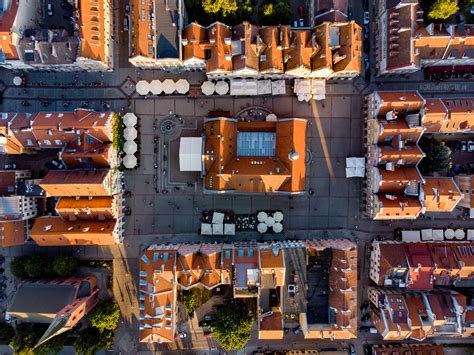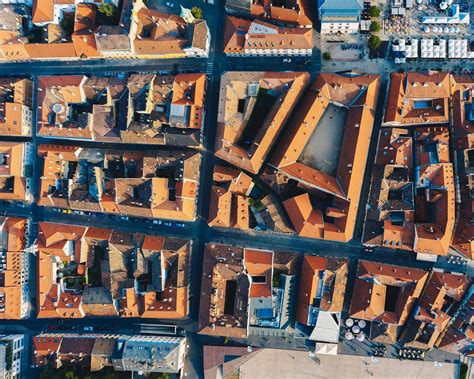Pablo Picasso, a titan of 20th-century art, revolutionized the visual world with his bold innovations and unconventional techniques. His influence, however, extends beyond the canvas, seeping into diverse cultural realms, including modern music. This article explores Picasso’s profound impact on contemporary music from a youthful perspective. We’ll delve into how Picasso’s distinctive styles have shaped album artwork, inspired musicians, and even influenced music videos. We’ll examine the interplay between his cubist principles and music composition, trace his thematic presence in song lyrics, and highlight how his legacy resonates in music festivals and events. Join us as we uncover the vibrant intersection of Picasso’s artistry and modern musical expression.
ujiyor.net offers a detailed exploration of this topic.
1. Introduction to Pablo Picasso’s Artistic Legacy
Pablo Picasso, born in 1881, remains one of the most influential figures in the art world. Renowned for his pioneering role in Cubism, Picasso’s work shattered traditional perspectives and introduced revolutionary forms of visual expression. His artistic legacy is marked by a relentless experimentation with style and technique, from the Blue and Rose periods to his later abstract and surrealist works. Picasso’s ability to blend reality with abstraction, coupled with his exploration of different mediums, has left an indelible mark on the art world.
His impact extends beyond painting, touching various aspects of culture, including music. The fragmented, multifaceted approach of Cubism parallels the innovative ways artists today break and reconstruct musical forms and genres. Picasso’s bold use of color, form, and perspective has inspired countless artists to push boundaries and explore new creative realms. As we delve into how his artistic vision has influenced modern music, it’s crucial to understand how Picasso’s groundbreaking techniques in visual art have laid a foundation for interdisciplinary creativity, resonating through album covers, music videos, and the thematic elements of contemporary songwriting.

2. Picasso’s Influence on Album Artwork
Pablo Picasso’s artistic innovations have significantly influenced album artwork, transforming how music visuals are conceived. His Cubist approach, characterized by fragmented forms and multiple perspectives, has inspired album covers that embrace a similar sense of abstraction and complexity. Artists and designers have drawn on Picasso’s bold use of color and form to create visually striking and thought-provoking album art. For instance, the fragmented compositions seen in Picasso’s works can be mirrored in album covers that break conventional design molds, reflecting the eclectic and dynamic nature of modern music.
Picasso’s influence is also evident in the incorporation of surreal and abstract elements, capturing the essence of experimental and genre-defying music. By channeling Picasso’s unique aesthetic, album artwork not only pays homage to his legacy but also engages listeners in a visual dialogue that complements the music’s innovative spirit. This synergy between art and music continues to push boundaries, offering a fresh perspective on both disciplines.

3. Musicians Inspired by Picasso
Many musicians have found inspiration in Pablo Picasso’s revolutionary art, integrating his visual innovation into their music and personas. Iconic artists like David Bowie and Pablo Picasso’s influence can be seen in Bowie’s eclectic style and his album covers, which often embraced a Cubist aesthetic and fragmented imagery. Similarly, the experimental sound of the Beatles in their later years paralleled Picasso’s avant-garde approach, with album art such as “Sgt. Pepper’s Lonely Hearts Club Band” reflecting a vivid, abstract style reminiscent of Picasso’s work.
Contemporary musicians also draw from Picasso’s legacy, with artists like Lady Gaga and Kanye West incorporating elements of his artistic vision into their album covers and stage designs. Gaga’s use of surreal, fragmented imagery and West’s bold, abstract visuals echo Picasso’s pioneering spirit. By channeling Picasso’s influence, these musicians not only honor his artistic legacy but also explore new ways to blend visual art with music, pushing creative boundaries and enhancing their artistic expression.

4. Picasso in Music Videos
Pablo Picasso’s influence extends into the realm of music videos, where his innovative visual styles have been creatively incorporated to enhance storytelling and artistic expression. Directors and artists frequently draw on Picasso’s Cubist and surrealist elements to craft visually striking and conceptually rich music videos. For example, the fragmented and multi-perspective aesthetics of Cubism can be seen in videos that employ disjointed, abstract imagery to convey complex narratives or emotions.
One notable example is the music video for Radiohead’s “Pyramid Song,” which features surreal, dreamlike visuals reminiscent of Picasso’s abstract works. Similarly, Beyoncé’s video for “Partition” incorporates bold colors and fragmented patterns that echo Picasso’s dynamic use of form and color. These videos not only pay homage to Picasso’s artistry but also utilize his visual techniques to create a unique, immersive experience that aligns with the music’s experimental nature. By weaving Picasso’s artistic vision into their visuals, contemporary musicians and directors continue to explore and expand the boundaries of creative expression in music videos.
5. Picasso’s Cubism and Music Composition
Picasso’s Cubism, with its fragmented forms and multiple perspectives, has had a profound impact on the way music is composed and perceived. Cubism challenged traditional representations of reality by breaking objects into geometric shapes and presenting them from different angles simultaneously. This approach parallels how some musicians deconstruct traditional music structures, reassembling them in innovative ways to create complex and multi-layered compositions.
In music, this influence can be seen in genres like jazz and electronic music, where artists experiment with time signatures, rhythms, and melodies, much like Picasso experimented with shapes and forms. Jazz musicians, for instance, often improvise by breaking down and reconstructing melodies, creating a soundscape that mirrors the fragmented nature of Cubist art. Electronic music producers similarly layer and manipulate sounds to create compositions that are not linear but rather multidimensional, echoing the principles of Cubism.
By applying the concepts of Cubism to music composition, artists can explore new auditory landscapes, offering listeners an experience that challenges traditional perceptions of sound, much like Picasso’s work challenged conventional visual art.
6. Picasso and the Evolution of Music Genres
Pablo Picasso’s influence on the evolution of music genres is evident in how his innovative approaches to art have inspired musicians to push the boundaries of genre conventions. Just as Picasso broke away from traditional artistic norms to create entirely new forms, musicians have drawn inspiration from his pioneering spirit to explore and develop new musical genres. His ability to blend various styles, such as combining African art influences with European techniques, mirrors the way artists have fused different musical traditions to create hybrid genres.
For instance, the development of genres like jazz fusion and progressive rock can be seen as musical equivalents of Picasso’s artistic experimentation. These genres often blend elements from diverse musical styles, much like Picasso’s Cubist works combine different perspectives into a single piece. Additionally, the rise of electronic music, with its emphasis on innovation and boundary-pushing, reflects the same revolutionary ethos that Picasso embodied.
Picasso’s legacy, therefore, not only reshaped visual art but also contributed to the evolution of music, encouraging artists to explore new frontiers and redefine the possibilities of genre.
7. Picasso’s Themes in Song Lyrics
Pablo Picasso’s themes, including his exploration of identity, emotion, and the human condition, have found their way into the lyrics of numerous songs, enriching the storytelling and emotional depth of modern music. His work, often characterized by its intense emotional resonance and symbolic complexity, provides a rich source of inspiration for songwriters who seek to convey similar themes in their lyrics.
Artists like Bob Dylan and Joni Mitchell have incorporated references to Picasso’s themes in their songs, using his artistic vision as a lens through which to explore complex human emotions. For instance, Dylan’s song “When I Paint My Masterpiece” reflects a longing for artistic achievement, echoing Picasso’s relentless pursuit of creative perfection. Mitchell’s “The Boho Dance” touches on themes of authenticity and the tension between artistic expression and commercial success, concepts that resonate with Picasso’s own struggles and triumphs in the art world.
Additionally, Picasso’s exploration of fragmented identities in his Cubist portraits has inspired lyrics that delve into the multifaceted nature of self and perception. By drawing on Picasso’s thematic elements, musicians craft lyrics that offer listeners a deeper, more nuanced understanding of the human experience, much like Picasso’s art does in the visual realm.
8. Picasso-Inspired Music Festivals and Events
Pablo Picasso’s influence has extended beyond traditional art forms, inspiring music festivals and events that celebrate his legacy through a fusion of art and music. These events often showcase how Picasso’s revolutionary ideas can be interpreted and expressed in a contemporary cultural context, creating spaces where visual and musical arts intersect.
One example is the “Picasso: Masterpieces in Music and Art” festival, where musicians and visual artists collaborate to create performances and installations that pay homage to Picasso’s work. These festivals typically feature a range of activities, from live music inspired by Picasso’s art to workshops where participants can explore the connections between music composition and visual creativity. The festivals often highlight genres that resonate with Picasso’s avant-garde spirit, such as jazz, experimental, and electronic music.
Such events not only celebrate Picasso’s influence on visual art but also explore his impact on music, providing a platform for artists to experiment with new forms of expression. By merging the worlds of art and music, these festivals and events embody Picasso’s innovative spirit, inviting audiences to experience his legacy in a dynamic, immersive environment that transcends traditional boundaries.
Pablo Picasso’s artistic innovations continue to resonate within the world of modern music, influencing everything from album artwork to music composition and festivals. His legacy inspires musicians and visual artists alike to push creative boundaries, merging the worlds of art and sound. Through these connections, Picasso’s influence endures, shaping the cultural landscape and enriching the artistic expressions of today’s youth.
ujiyor.net

